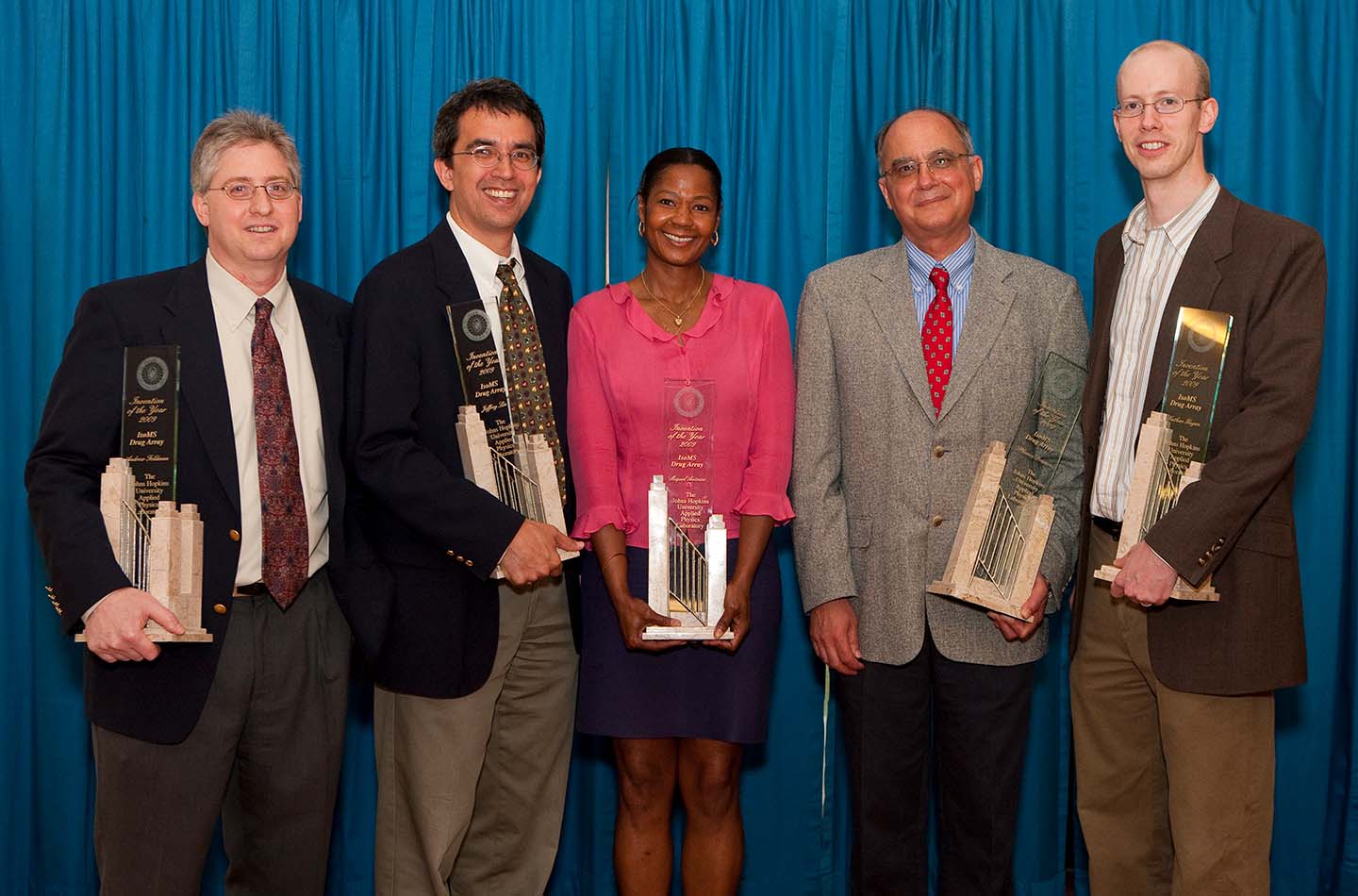Press Release
Johns Hopkins APL Names Invention of the Year
Method to Assess Microbial Drug Resistance Chosen as APL’s 2009 Innovation of the Year
Thu, 04/08/2010 - 14:35
A method to quickly determine whether potentially harmful microbes are resistant to certain drugs has been named the year’s top invention at The Johns Hopkins University Applied Physics Laboratory.
The winner was chosen from the 118 inventions reported by 218 APL staff members and collaborators in 2009. An independent panel of 30 representatives from industry, the high-tech sector and patent law selected the top invention based on its benefit to society, improvement over existing technology, and commercial potential. Acting Technology Transfer Director Norma Lee Todd and Bharat Doshi, head of APL’s Milton Eisenhower Research Center, presented trophies and cash awards to the inventors during the Laboratory’s 11th annual Invention of the Year ceremony April 8 on the APL campus in Laurel, Md.
Invented by APL researchers Plamen Demirev, Miguel Antoine, Andrew Feldman, Nathan Hagan and Jeffrey Lin, the “IsoMS-Drug-Array” uses mass spectrometry to determine whether a microorganism is susceptible or resistant to one or more drugs — in a fraction of the time required by current technologies. The method requires no prior identification or characterization of the organism; in fact, it can simultaneously characterize and identify the organism and determine its drug susceptibility or resistance in a matter of hours. Based on APL-developed algorithms, this novel method has potential applications in homeland defense, clinical microbiology, infectious disease treatment, and drug development and testing.
Twelve other inventions, covering areas ranging from materials and nanotechnologies to computer security and communications, were finalists for the award. [Read descriptions of the finalists.]
“Every day, our staff is called on to address the nation’s most critical technical challenges,” says APL Director Richard Roca. “These inventions are perfect examples of how APL’s best scientists and engineers apply their skills with innovation, imagination and creativity.”
Former APL researcher Micah Carlson was also named as a “Master Inventor,” joining 22 other past and current APL staff members who earned that honor by holding at least 10 patents.
Technology Transfer at APL
APL opened its Office of Technology Transfer in late 1999 to facilitate the transfer of APL-developed technology to the private sector. The Lab ranks among top research universities in its number of inventions, licenses, patent applications, patents issued, start-up companies, and associated research and development income. APL technologies have been transferred to companies all over Maryland and in 36 other states, as well as in Canada, Brazil, the Netherlands and Denmark. Other accomplishments over OTT’s first decade include:
- 1,306 inventions disclosed
- 274 U.S. patents issued
- 1,384 U.S. patent applications filed
- 238 license agreements executed
- 20 start-up companies; more than 50 jobs created
- More than $31.5 million in licensing and related research and development income
- 52 products based on licensed APL technologies
APL’s 2009 Invention of the Year was recently featured in The Baltimore Sun. To read the article, visit http://www.baltimoresun.com/news/maryland/bs-md-invention-20100416,0,3512549.story.
For more information on APL’s Technology Transfer programs, visit www.jhuapl.edu/ott.
